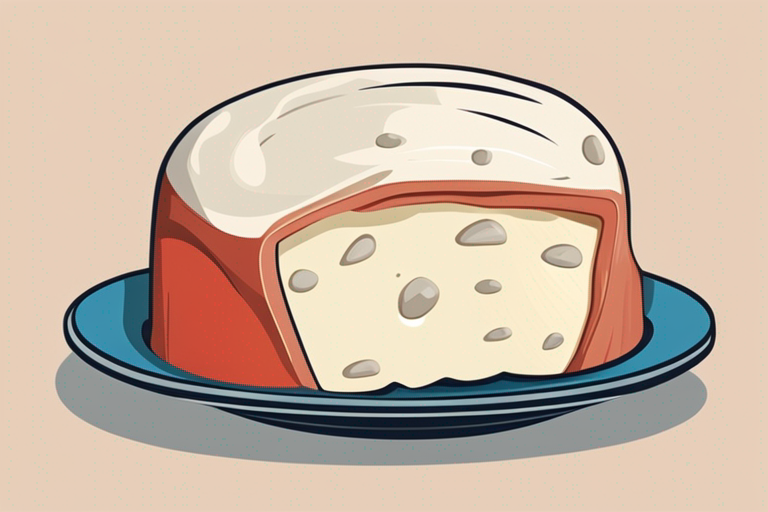
Can I Use Cream Cheese After the Expiration Date?
Get Your Free Food Safety Cheat Sheet
30 most common foods with instant answers. Print it and stick it on your fridge—completely free!
Can I Use Cream Cheese After the Expiration Date?
Cream cheese is a versatile and delicious ingredient that can be used in a variety of dishes, from cheesecakes to dips and spreads. But what happens if you find a container of cream cheese in your fridge that has passed its expiration date? Is it safe to use, or should you toss it out? In this blog post, we'll explore the safety of using cream cheese after the expiration date and provide you with some practical tips for storage and handling.
Understanding Expiration Dates on Cream Cheese
When it comes to cream cheese, the expiration date is an indicator of the manufacturer's best estimate of how long the product will maintain its quality and freshness. It is important to note that the expiration date is not a strict deadline and that cream cheese can still be safe to consume after this date, depending on how it has been stored.
Factors to Consider
When determining whether cream cheese is still safe to use after the expiration date, consider the following factors:
-
Storage Conditions: Cream cheese should be stored in the refrigerator at a temperature of 40°F (4°C) or below. Proper storage is crucial in maintaining the quality and safety of the product.
-
Packaging Integrity: Check the packaging of the cream cheese for any signs of damage, such as tears, leaks, or bloating. Damaged packaging can lead to contamination and spoilage.
-
Appearance and Smell: Inspect the cream cheese for any signs of mold, discoloration, or off-putting odors. If the cream cheese looks or smells unusual, it is best to discard it.
Safety Considerations for Using Expired Cream Cheese
While cream cheese can sometimes be safe to use after the expiration date, there are some important safety considerations to keep in mind:
Storage Guidelines
- Keep cream cheese refrigerated at all times.
- Store cream cheese away from strong-smelling foods to prevent absorption of odors.
- Use a clean utensil to scoop out the cream cheese to avoid cross-contamination.
Signs of Spoilage
- Mold growth: Discard cream cheese if you see any mold on the surface.
- Off-putting odor: If the cream cheese smells sour or off, it is best to throw it away.
- Unusual texture: If the cream cheese feels slimy or grainy, it may have spoiled.
Risk of Foodborne Illness
While consuming cream cheese after the expiration date may not always result in immediate illness, there is a risk of foodborne illness if the product has spoiled. Symptoms of foodborne illness can range from mild gastrointestinal discomfort to more severe complications.
Tips for Extending the Shelf Life of Cream Cheese
To maximize the shelf life of cream cheese and ensure its safety for consumption, consider the following tips:
-
Properly Seal the Packaging: After each use, make sure to reseal the cream cheese packaging tightly to prevent air exposure and contamination.
-
Use an Airtight Container: If the original packaging is damaged, transfer the cream cheese to an airtight container before storing it in the refrigerator.
-
Label the Container: Write the date of opening on the container to help you track how long the cream cheese has been stored.
-
Consume Promptly: Try to use up the cream cheese within a week or two after opening to maintain its freshness.
Conclusion
In conclusion, while it is generally safe to use cream cheese after the expiration date, it is essential to consider storage conditions, packaging integrity, and signs of spoilage before consuming the product. By following proper storage guidelines, monitoring for signs of spoilage, and using cream cheese within a reasonable timeframe, you can enjoy this creamy delight without compromising your health.
Remember, when in doubt, it's always best to err on the side of caution and discard any cream cheese that appears questionable. Your health and safety should always be a top priority when it comes to food consumption.

Authoritative Food Safety References
These agencies and university labs inform every tip and health precaution we publish.
USDA FoodKeeper – Cold Storage Guidelines
Official refrigerator, freezer, and pantry timelines maintained by the U.S. Department of Agriculture.
Visit USDA FoodKeeperFDA Produce Safety Rule & Grower Guidance
Field-to-fridge handling practices that prevent contamination of fruits, vegetables, and leafy greens.
Visit FDA Produce SafetyCDC Foodborne Illness Prevention Hub
Surveillance-backed guidance on pathogens, symptoms, and steps to reduce foodborne illness risk.
Visit CDC Food SafetyUC Davis Postharvest Technology Center
University research detailing optimal storage atmospheres for produce after harvest.
Visit UC Davis PostharvestPenn State Extension – Home Food Preservation & Safety
Peer-reviewed extension bulletins on safe canning, chilling, and reheating practices.
Visit Penn State ExtensionHow can I tell if cream cheese has gone bad?
Can I freeze cream cheese to extend its shelf life?
How long does cream cheese last in the refrigerator?
Is it safe to consume expired cream cheese if it looks and smells fine?
Get Your Free Food Safety Cheat Sheet
30 most common foods with instant answers. Print it and stick it on your fridge—completely free! Want more? Upgrade to the complete guide with 70+ foods.
Scan your food directly and get instant safety info using our AI-powered camera feature.